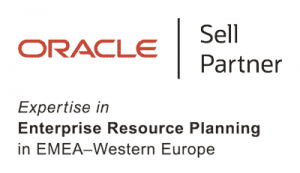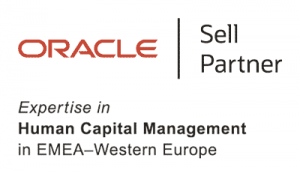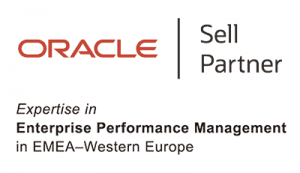Published on July 22, 2020
SaaS – The True Cost of the Race to the Bottom of the Rate Card
Recently a recurring theme appears to be emerging regarding Cloud Customers (regardless of platform selected) in not being able to realise the value promised from their Software as a Service (“SaaS”) ERP implementations. Whilst I might attentively raise an enquiring eyebrow, experience tells me that I probably already know the root cause of their problem – they bought an implementation on the cheap, struggled to embrace the change despite being told it was going to be transformational and they never had a plan beyond go-live. So how did the Organisation get here? Well unfortunately it often, but not always, starts with the buying process.
Immediately I now find myself in dangerous territory walking along the tightrope that bridges the Buyer-Supplier divide. But with all my musings hopefully they are educational as it gives the reader a real glimpse of what really happens and where these types of implementations can fail right from the very outset. For some it’s going to be controversial, but I promise to save some of my more outrageous experiences for my book (and yes to those that follow me it is still coming!). Smile.
Seriously though, what I am not trying to do is level any criticism but rather educate through insight by providing a heavy dose of reality of what goes on when a procurement for a Systems Integrator commences and the implications of a price driven competition.
However, if price is always going to be the overriding factor in an Organisation’s purchasing decision making, then no matter what I say here is not going to make any difference. So, before you stop reading, remember in this game you always get what you pay for.
The Concept of Value?
It’s a term banded around like sweets in a sweetshop. In-fact we all subconsciously use it in our day-to-day decision making. The dictionary definition of value is simply “the importance, worth, or usefulness of something”.
I am often asked as to how we valued Certus Solutions before we sold it. Now valuing a company as a mathematical exercise can be determined by a number of methods including Discounted Cash Flows; P/E Ratio’s; EBITDA; Revenue Multipliers; Book Value (Asset); and Liquidation Value. Each will come up with a different number. All of this is working to quantify objectively something that can be pretty intangible, especially in Professional Service Companies whose only real asset is goodwill. I can tell you it is the most subjective of all exercises and I have personally spent many hours trying to explain this to people often without success.
However, the one single factor that is the most important which is not found on the balance sheet, the P&L or in a valuation method is simply how much a willing Acquirer is prepared to pay? and how much is the Owner prepared to sell it for?
It’s the same for buying a SaaS ERP and selecting an implementation partner. What is the Buyer prepared to pay against what they value? and what can a Supplier provide at a profitable price point that realises that value for the Buyer?
Where both sides reach an accord is the sweet spot of any deal, as both recognise the value generated as being beneficial to one another. To do so means eliminating subjectivity and trying to objectively crystalize value as a commercial transaction ensuring expectations on both sides of the equation are met.
Buy-Side – The Competition
A professional Buyer quite rightly wants to know they are purchasing the right product or service at the right price and that its going to deliver the benefits that they have identified. Consequently, they will want to test the market against their requirements.
Best practice is always for Buyers to engage the market informally and early to gain understanding of the “players” out there. Consequently, the Buyer can shape the “ask” accordingly, and also sensible conversations lead to Suppliers becoming interested in the opportunity.
A competitive procurement process is full of ironies. After a Supplier has attended a procurement briefing which are usually held as a showcase for the Buyer to tempt and explain to the market as to why they should be participating, the well-crafted Invitation To Tender (ITT) or Request For Proposal (RFP) follows.
This is a document that has usually taken many months of significant effort to create, with the Buyer explaining in great detail what they are wanting to achieve in terms of outcomes, and with realms of questions they require the Supplier to justify why it should be them.
But then, regardless of what has been said, the scoring and weighting criteria for price is stacked on the high side. In a single stoke of a pen, the Buyer has completely contradicted themselves.
The Supplier also knows the first thing a Buyer does on receipt of a response is to turn to the commercial section to see what it is going to cost? and subsequently skip over the 30+ pages of a Supplier’s equally time consuming well-crafted answers proving they have the capability for delivery and what additional value they can bring to the party.
The rule of thumb is if its 40% or more weighted on price, the procurement, regardless of its size, total value, and what the Buyer says is important, is immediately labelled by the Supplier as a “race to the bottom of the rate card” and the qualification dance begins.
Price is always going to be a factor and rightly so. However, to achieve value for money, it should be a factor alongside a number of other factors that collectively are all positively correlated to the value generated required.
In my time I have seen some of the most complicated mathematical statistical equations for scoring a procurement which for the majority of us (myself included) need an Advanced Mathematics degree from Oxford or Cambridge to understand. However, this all counts for absolutely nothing if the “Supplier Fit” – the culture, their beliefs and values are not aligned with the Buyers Organisation. Because, when things get tough, and they will as they always do in an ERP implementation, it is the behaviours of both sides that will get you through.
However, when the Buyer encourages the race to the bottom of the rate-card and gets two horses running they often leverage this by playing one off against the other driving the price lower in search of the better deal. At some point it becomes completely uneconomical for the Supplier to deliver the project. That sets both sides up for a future commercial conflict with the project never meeting the Buyer’s expectations in terms of benefits sort.
Supply Side – The Qualification Dance
Every sales opportunity, big or small, always gets qualified. Competitions cost serious money and require significant effort to take part in. Nobody ever plays to lose, as you get nothing in this game for coming second. However, the Buyer sometimes is completely oblivious of the costs involved in playing the game, despite the usual legal wording in the document that the they will not be liable for any costs incurred from the Supplier taking part.
What does qualification mean? Simply should the Supplier invest their time and money into even responding in the belief that they will be successful. If the Supplier believes that they cannot win or the procurement isn’t in the right shape; then it’s a no bid. In doing so the Supplier has just saved significant amounts of effort, cash and often goodwill amongst its staff for another day.
Selling on price is easy, it belongs to the “stack’em and pack’em” brigade. It’s a valid business model, and there are many Companies that work in the Systems Integration space that are extremely successful at doing this. So, if a procurement is weighted 40% or more on price, your definitely in the game if this is your business model.
Do I personally believe this is the right approach to maximise value from a SaaS implementation? Absolutely not! To do this properly you have to constantly generate value over the life of the contract. To achieve that you must have a long-term relationship with the Client and this requires constant two-way investment from both sides.
Selling on value is an art. It’s not easy. Your proposition has to be specifically crafted to hit all the Buyers values; and then some! To do that, you need to understand the Organisation and business your selling into, joining the dots as to how your proposition will enable them to overcome some of the market challenges they are facing. This takes research and serious amounts of effort on part of the Supplier before you go anywhere near a keyboard to write the proposal, often then weaving this into the specific questions the Buyer is asking.
So how does this play out? if the price weighting is 30% or less; and the procurement structured in such a way you are given the option to differentiate yourself from the competition, then it is worth looking at if you sell this way. The Buyer is saying “What can you bring to the party, because we are genuinely interested?” and indicating that price is not the only factor, and you have the opportunity to innovate, and therefore differentiate yourself.
The other key supply side qualification criteria is always around the competition and the relationships they have or you yourself have with the Client. What are they looking for? has the procurement been influenced or shaped by someone else in advance. I have talked about this before in more detail in my blog.
If you are not working the inside channels of a client in advance I will absolutely guarantee that someone else already has or is. It creates subconscious influence and potential bias in people. That’s why Suppliers do it.
Wider Market Impact – Price of Commoditisation
Anyone can sell on price alone and equally anyone can buy on price. That is not salesmanship or balancing the equation best practice procurement in a non-commoditised market.
Dropping the price can be dangerous for a Company’s business operations. Deals become economically unviable and cannot be delivered. This has implications as it drains a company’s most critical asset – cash. Large Companies can ride a bad deal out, for SME’s it can be fatal. Buyers putting Suppliers out of business, regardless who signed the contract, never helps the Buyer in the long run. You can’t recover costs from a Company that has gone out of business.
Even worse it can affect the wider market. A market driven purely by price, becomes commoditised. Two things then happen. Firstly, Suppliers stop competing, especially if known suppliers are constantly undercutting everyone else on price. Choice becomes limited, quality of service is impacted, Customer satisfaction and advocacy drops.
Secondly, with Suppliers unable to make a profit, and therefore not having the case to constantly invest in its delivery capability they start exiting the market. The market in-effect becomes constrained, as potential suppliers leave looking elsewhere for commercial profitable opportunities.
Regardless of what Vendors sometimes say SaaS ERP systems don’t implement themselves. Cloud is transformational, it’s going to change how you operate. If you don’t possess the internal capability to manage such a transformation you are going to need external expertise. Remember, Cloud SaaS technology is not really a leading technology today, the technical risk is minimal, as thousands of successful implementations have been undertaken around the world. Projects fail not because of the technology; projects fail because the Client can’t manage programme complexity; the business change required isn’t delivered; or the Systems Integrator personnel don’t know the SaaS product.
True Cost of Price Driven Implementations
Price driven implementations are the equivalent of assembling a building and just switching the lights on. However, when you enter and look around nobody has fitted the building out, so its use is extremely limited. Characteristics of price driven SaaS implementations usually involve:
Consequently, low price overall has a negative correlation linked to the value realised.
Don’t Just Switch the Lights On – Maximising the value from SaaS
SaaS applications provide you with truly a wonderful opportunity to modernise the back office in many ways. So how do you maximise the value from the implementation?
Buy Cheap you Buy Twice
An old adage, but true. You buy cheap you will ultimately end up buying twice. I have lost count of how many rescue ERP implementation projects I have undertook over my career. Always extremely stressful for everyone involved, very expensive and most of all so annoyingly easily avoided.
For those recovery projects that do make it live, you still have an unhappy Customer as their expectations haven’t been met and they are still upset over the cost. Recovery projects at a minimum get you live and that requires you to revive the Client from their initial cardiac arrest. Even then the building fit out is still required and that requires more investment.
In the early days of Cloud, every software vendor was sighting just how easy and quick it was to implement their solutions. The truth is that Cloud SaaS technology in a business context was by far too transformational. Consequently, many implementations could not be delivered for the price contracted for, and Suppliers (as I well know) are only going to invest in buying market share for so long. On the Buyer side frustration builds, and the only way to defuse this is through constant education, enhancement and enablement to drive value.
The market moves in cycles, and we are now definitely seeing those Clients that have bought their implementations cheaply are not reaping the benefits that the Cloud SaaS applications can generate. It’s all about expectation setting from the outset and this requires realignment.
Why is this happening now? primarily we are in the first major 3 or 5 year renewal cycle for those having bought previously and they are now questioning what they have done. SaaS provides innovation, the functionality is there, but you have to invest to release it. Continuous improvement is the order of the day, but if you are not prepared to do this, then don’t complain you cannot get the value from Cloud, because you absolutely can.
The very best commercial deals are always the ones where collaboration between Buyer and Supplier both parties create value for one another. Those that understand this are the real winners. For this to work properly both sides have to take time to really get to know one another; then work at having an effective working relationship (it doesn’t always come naturally); and most importantly are prepared to share the risk and the rewards of any engagement.
Alternatively, if you side with the opposite logic regardless which side of the fence you are on, that the best deal is where you win and the other side doesn’t, then you will see an appropriate set of behaviours that are frankly counter intuitive to generating not only long term lasting value but you will be lucky to get anything substantive in the near term.
Time to turn the lights on? Anyone know where the light switch is?
Disclaimer: This is a personal blog. The opinions expressed here represent my own and not those of my employer. In addition, my thoughts and opinions change from time to time and I consider this a necessary consequence of having an open mind. This blog is intended to provide a semi-permanent point in time and as such any thoughts or opinions expressed within out of date posts may not be the same or similar to those that I hold today.
















